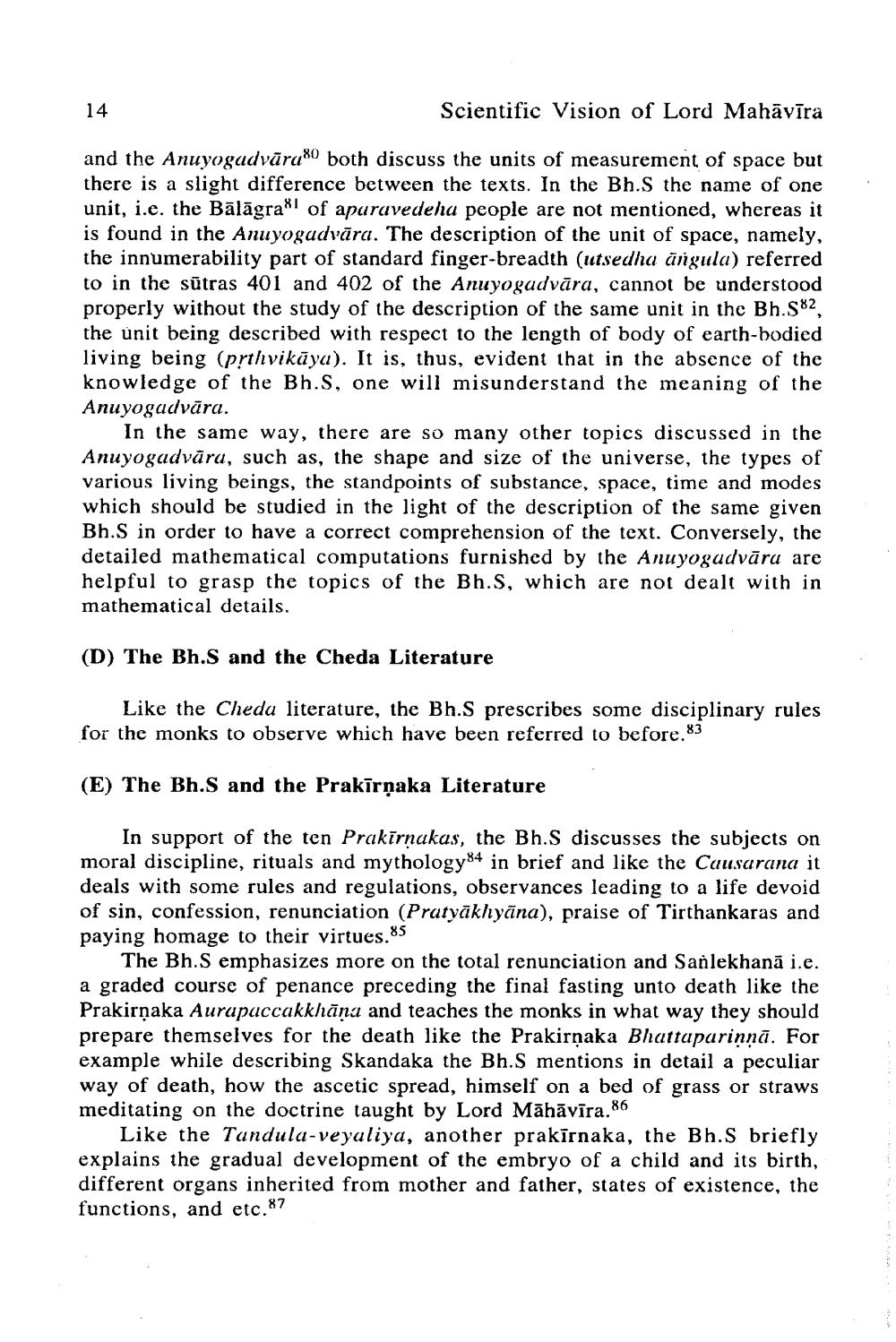________________
Scientific Vision of Lord Mahāvīra
and the Anuyogadvāra80 both discuss the units of measurement of space but there is a slight difference between the texts. In the Bh.S the name of one unit, i.e. the Bālāgra" of aparavedeha people are not mentioned, whereas it is found in the Anuyogadvāra. The description of the unit of space, namely, the innumerability part of standard finger-breadth (utsedha angula) referred to in the sutras 401 and 402 of the Anuyogadvāra, cannot be understood properly without the study of the description of the same unit in the Bh.S82, the unit being described with respect to the length of body of earth-bodied living being (pṛthvikāya). It is, thus, evident that in the absence of the knowledge of the Bh.S, one will misunderstand the meaning of the Anuyogadvāra.
14
In the same way, there are so many other topics discussed in the Anuyogadvāra, such as, the shape and size of the universe, the types of various living beings, the standpoints of substance, space, time and modes which should be studied in the light of the description of the same given Bh.S in order to have a correct comprehension of the text. Conversely, the detailed mathematical computations furnished by the Anuyogadvāra are helpful to grasp the topics of the Bh.S, which are not dealt with in mathematical details.
(D) The Bh.S and the Cheda Literature
Like the Cheda literature, the Bh.S prescribes some disciplinary rules for the monks to observe which have been referred to before.83
(E) The Bh.S and the Prakīrņaka Literature
In support of the ten Prakirṇakas, the Bh.S discusses the subjects on moral discipline, rituals and mythology84 in brief and like the Causarana it deals with some rules and regulations, observances leading to a life devoid of sin, confession, renunciation (Pratyākhyāna), praise of Tirthankaras and paying homage to their virtues.85
The Bh.S emphasizes more on the total renunciation and Sanlekhana i.e. a graded course of penance preceding the final fasting unto death like the Prakirṇaka Aurapaccakkhāṇa and teaches the monks in what way they should prepare themselves for the death like the Prakirṇaka Bhattaparinṇā. For example while describing Skandaka the Bh.S mentions in detail a peculiar way of death, how the ascetic spread, himself on a bed of grass or straws meditating on the doctrine taught by Lord Mahāvīra.86
Like the Tandula-veyaliya, another prakīrnaka, the Bh.S briefly explains the gradual development of the embryo of a child and its birth, different organs inherited from mother and father, states of existence, the functions, and etc.87




